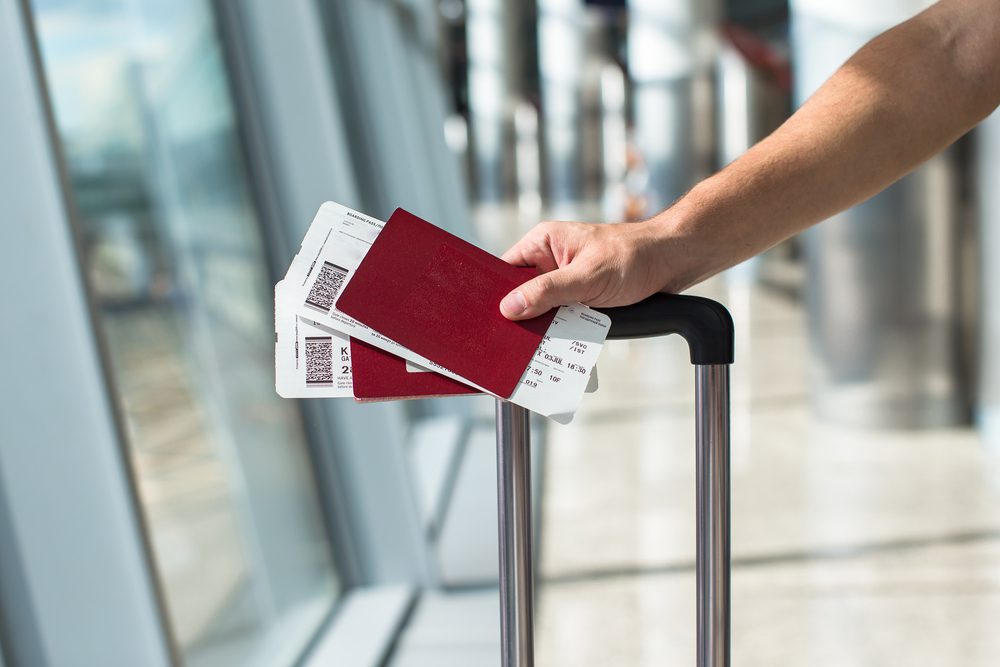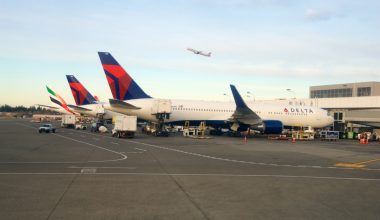How do airlines make money? However, even in the best of times, airlines generate a substantial positive cash flow and gain marginal profitability. In this article, we will discuss how airlines make money. Let’s take a closer look at airlines’ sources of revenue.

How do airlines make money?
1. Ticket sales
The airline industry is service-oriented as it caters to the travel needs of leisure and business passengers easily, conveniently, and quickly. Most airline revenue comes from passengers who purchase airline tickets to fly on aircraft. Nowadays, some airlines even allow customers to pay for their flights using cryptocurrency, which enables them to send and receive crypto as payment. Airfare is the primary source of airline income that covers the cost of air transportation for travelers in a predetermined class. Aircraft are valuable assets for carriers as they seek to maximize profits made through ticket sales. Empty seats don’t generate revenue; the higher the number of occupied seats in airplanes, the greater the revenue for airlines. you can purchase the ticket with crypto as well.

The common trait of profitable airlines is the effective management of their aircraft. As airplanes depreciate in value over time, carriers must maximize their utilization to manage the large economic weight on their balance sheets.
The total number of seats aboard an aircraft shapes the revenue-generating power of airlines. Depending on the marketing strategy, airlines make money by selling a certain number of seats in different booking classes. Airlines focusing on leisure travelers often tend to maximize their seats to keep ticket prices as low as possible. Most of their seats belong to a regular economy class with standard legroom and comfort. On the other hand, carriers with a strong following in the business community dedicate a large portion of their aircraft space to business-class sections featuring premium cabins, comfortable wide seats, spacious legroom, etc. A large chunk of airline revenue comes from premium travelers, who usually account for 10-12% of all airline passengers but are typically twice as profitable as other passengers. Opulent travelers bring substantial revenue to airlines, paying premium prices for innovative ergonomic seats designed for maximum comfort, personalized service, and exceptionally luxurious flight experience.
Airlines must maintain a finely-tuned balance to satisfy their mix of customers and set reasonable fares for each of their booking classes to earn profit. Carriers can maximize their income by providing the right blend of full-fare and discount-level tickets for each flight.
How do airlines fix ticket prices?
Until 1978, US airlines followed regulated ticket pricing set by the Civil Aeronautics Board (CAB). The Airline Deregulation Act of 1978 freed airlines from domestic CAB regulation, meaning airlines could fix their own prices and open up flying to more travelers. In the present context, airlines use algorithm-based pricing and historical data to regulate their airfares. Airlines fix ticket prices with the help of algorithms using extensive data analysis. These pricing algorithms consider several factors, such as fuel prices, competitor fares, length of trip, current sales volume, customer profile, overbooking level, etc.
2. Ancillary revenue
In addition to the traditional business model of making money from ticket sales, airlines now sell optional ancillary services to generate additional income. Ancillary revenue refers to non-ticket sources of airline revenue earned by unbundling air transportation from services such as checked bags, meals, in-flight entertainment, etc., and charging separating for them. Airlines make money by offering a menu of optional ancillary services. Let’s dive deep into significant components of ancillary revenue:
a. Excess bags
Some fares are all-inclusive and provide air transportation and baggage at no additional charge. Carriers have a provision of baggage allowance, permitting each passenger to transport a certain amount of luggage free of charge. But if passengers exceed the luggage weight limit, airlines charge them extra money.

If you are wondering why airlines have a permissible luggage weight limit and charge excess baggage fees on passengers, there are several reasons behind it. There is a weight-and-balance mechanism in aircraft to achieve safe take-off. Every extra pound gets the commercial aircraft closer to the weight limit and affects its range and fuel consumption. More weight results in more fuel which decreases the revenue for the airline. The excess baggage charge allows airlines to offset the cost of surging fuel prices and helps to maintain weight limits. Besides, baggage fees are usually not subject to regulations and comprise an important revenue source contributing to airline profitability.
b. In-flight services
In modern times, the focus for airlines has transitioned from luxury to revenue. In contrast to the conventional way of bundling ticket prices with in-flight services, airlines now offer optional amenities, giving travelers a choice to purchase them at a separate price. Ancillary in-flight services include meals and beverages, cabin pillows and blankets, in-flight entertainment, in-flight internet (Wi-Fi) access, etc.

Low-cost airlines have buy-on-board food options, meaning you must pay first to eat the meal onboard. Airline meals are pretty expensive; sometimes more than double the regular price you would pay in a restaurant. If you are feeling peckish on a flight, you can try these meals but don’t be surprised if they are begrudgingly charged.
In-flight Wi-Fi is becoming a common feature on airplanes to cater to tech-savvy travelers’ needs. JetBlue Airways is the only US carrier offering high-speed Wi-Fi facility onboard for free to on-the-go passengers. Major US carriers, such as American Airlines, Delta Air Lines, United, etc., have pushed forward the transformation of onboard Wi-Fi products, offering Wi-Fi plans on an hourly or monthly basis at different prices.
c. Seat assignments, priority check-in, and boarding, lounge access
Low-cost carriers earn ancillary revenue in several services such as seat assignments, priority check-in and boarding, airport lounge access, etc. Depending on the location of the seat (e.g., window, aisle), airlines charge passengers for selecting their seats accordingly on the aircraft before the flight. Airlines also make money by offering priority check-in and boarding services, enabling passengers to have a seamless airport experience without having to stay in lines to check in and board the aircraft.
d. Frequent flier programs
Airline mileage programs are not just a pernicious way for carriers to get extra loyalty from travelers; they are also nice money earners. How do airlines make money from such programs? As a matter of fact, carriers can make billions by selling their loyalty program frequent flier miles to their commercial partners, card issuers, and other financial businesses.

When flyers make purchases with frequent-flier points, airlines get a portion of the annual fee holders to pay. Airlines drum up business and sell their frequent flier points to commercial partners which, in turn, are offered to partners’ customers as a sales incentive. On the other hand, passengers can purchase mileage points directly from airlines for personal use or as a gift which helps to make airlines more money.
e. Commission
Not only travel agents but also airlines make money from commission-based products. The commission-based ancillary revenue is generated when airlines promote or sell products and services on behalf of third-party providers such as insurance, retail stores, hotels, car rentals, etc. Carriers refer their customers to third-party providers and yield a commission when a purchase is made.
f. Other ancillary services
The other source of ancillary revenue for airlines include aircraft charters (flying on behalf of the business or sports teams), leases (dry lease or wet lease), tech operations, pilot training programs, etc.
3. Cargo transportation
How do airlines make money from cargo?
Airlines are quintessential to shipping goods and essential items from one location to another in the shortest time. In today’s world, air cargo is a huge business with a big uptick in demand for freighters and conversion. Airlines make big bucks by ferrying cargo in their dedicated freighter aircraft and in the belly holds of passenger flights. Over the years, cargo revenues have increased tremendously and contributed to the overall profitability of international air operations. The charge of transporting cargo aligns with its type (live animals, special, vulnerable, wet, valuable, heavy, etc.), size, weight, and shipping time. Overall, cargo flights account for 30-35% of airline flight revenues.

Why do airlines earn minimal profit?
Now that we have learned how airlines make money, it’s time to ask why airlines earn minimal profit. Although there are diversified revenue sources for airlines, a wide array of airline costs such as airport charges, fuel prices, maintenance, salaries, administrative expenses, passenger service, etc. are always present. By nature, the airline industry is capital-intensive (requiring an enormous range of expensive equipment and facilities), labor-intensive (a large number of workforces involved), and highly seasonal (depends on travel patterns) so, there are thin profit margins for carriers around the globe.






